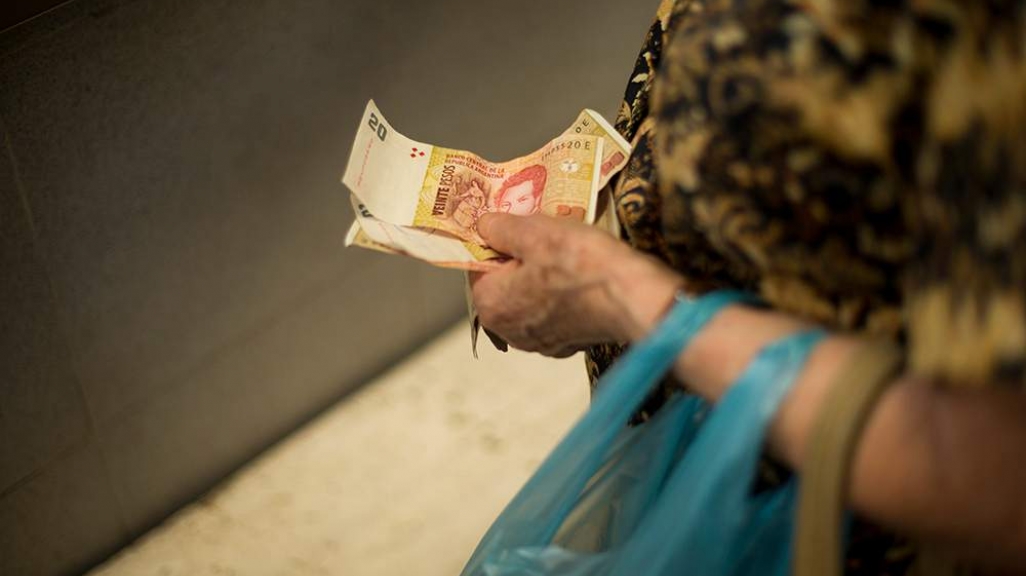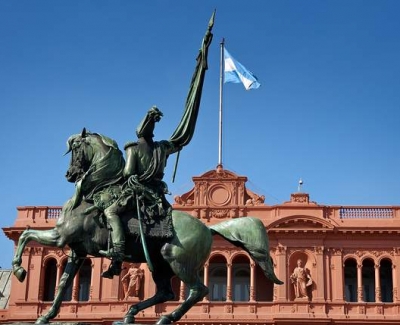Update: The Economic Scenario ahead of Argentina's Legislative Elections
Update: The Economic Scenario ahead of Argentina's Legislative Elections
Before the October 22 vote, we look at where economic indicators like inflation, debt, and trade stand.
President Mauricio Macri’s mission to return Argentina’s economy to normalcy is about to get a lot harder—or easier—depending on the results of the October 22 legislative elections. Sunday’s midterm vote is considered a referendum on the president’s reformist agenda, with Argentines electing a third of their senators and half of their deputies to the upper and lower houses of Congress. Though the president’s Let’s Change coalition (Cambiemos) is unlikely to get a majority in either house if results of the August 13 primaries repeat themselves, pro-government candidates are edging out the opposition in polls and could help him win enough support to push policies through.
A boost for Macri at the ballot box is more likely now thanks to the hot-off-the-press numbers illustrating the country’s economic progress. An International Monetary Fund report from October revised Argentina’s expected GDP growth for 2017 upward to 2.5 percent from its 2.2 percent projection earlier this year. On September 21, the government’s statistics agency announced that, in the second quarter, the economy grew 2.7 percent—the fastest quarterly GDP growth rate since Macri took office in December 2015.
But not all Argentines feel their situations have improved. A 30 percent cut to government subsidies from August 2016 to August 2017 is affecting small businesses and individuals alike. How they vote on Sunday could determine whether more cuts would follow and approval of the president’s 2018 budget, which ultimately raises social welfare spending, as well as the success of other legislation like tax reform and trade deals.
Below are key areas of the economy under the microscope as voters prepare to head to the voting booth.
Inflation: Good but not good enough
With the second-highest inflation rate in Latin America after Venezuela, the Macri administration has been eyeing a drop in Argentina’s inflation since it shot up to over 40 percent in August 2016 after a handful of economic adjustments. Inflation finally slowed this year as the strength of the peso and consumer confidence both improved, and now the annual rate is on track to be Argentina’s lowest since 2009. With accumulated inflation from January to September at 17.6 percent already outpacing the Central Bank’s original annual target inflation of 12 to 17 percent, the bank now expects the year to close with 22 percent inflation, down from 2016’s 36 percent. To hit 22 percent, however, would require month-to-month inflation below 1 percent from October to December.
Short-term sprints aside, the president is optimistic about the road ahead. In a September 28 interview on Bloomberg Television, Macri said, “We have turned a corner. I am more confident than ever that in 2019 we will have single-digit inflation.” But before then, Argentina will have another double-digit inflation year in 2018, with an estimated 18 percent based on IMF projections, while the government is aiming to cap it at 12 percent.
Debt and deficit: Finding the right balance
Aside from focusing on inflation, Argentina should prioritize lowering its fiscal deficit by 2 percentage points, according to Alejandro Werner. The IMF’s Western Hemisphere director said it is especially important to do this in the next two years before interest rates go up in the context of a stronger international economy, suggesting more cuts to energy subsidies as one way to go about it. “Fiscal rebalancing would need to be based on further reductions in the generous and ill-targeted energy subsidies and on a rationalization of spending in many other areas, including wages, goods and services, and discretionary transfers to the private sector and provinces,” he said in a press conference on the sidelines of IMF and World Bank meetings in Washington last week.
Indeed, the Macri administration is working on it. Now awaiting Congress’ review, Macri’s 2018 budget proposes to bring the fiscal deficit down to 5.5 percent of GDP from 6.2 percent in 2017, and the bulk of that trim is to come from a reduction in energy and transport subsidies worth 0.6 percent of GDP. The budget is also counting, however, on the Argentine economy growing an entire percentage point more in 2018 (3.5 percent) than the IMF predicts (2.5 percent).
So far this year, the government managed to cut its primary fiscal deficit (which doesn’t include interest payments like the overall fiscal deficit does) 30 percent from August 2016 to August 2017, due in large part to a hefty 38.6 percent cut to energy subsidies.
The deficit aside, there’s also Argentina’s large public debt, which is the third highest, as a portion of GDP, in Latin America after Brazil and Belize. Already in the first nine months of 2017, Argentina added $72 billion to its public debt, putting it on track to reach $317 billion by the end of the year. That would amount to 60 percent of GDP, the highest ratio in a decade.
Trade: Looking within and without
Another pillar of Macri’s Argentina makeover is opening up the protectionist economy to play a greater role in global trade flows. But the change has been slow, with exports growing just 1.4 percent from January through July this year, as imports grew 15.4 percent during the same period. One reason is the sluggish economic recovery of its principal commercial partner, Brazil. Argentina is looking to fortify its relationships with Brazil and the other three much smaller Mercosur members Bolivia, Paraguay, and Uruguay, while also encouraging the trade bloc to look outside itself. At the upcoming World Trade Organizations (WTO) December meeting in Buenos Aires, Canada and Mercosur are expected to announce the start of “exploratory” talks for a free-trade deal. Meanwhile, the hope that Mercosur would finally sign a deal with the European Union by the same WTO gathering is fading quickly as France’s new President Emmanuel Macron urges negotiators to rethink the EU’s strategy and raise environmental and health standards. At the same time, Mercosur is upping its own demands as Argentine farm groups request access to 5 percent of the EU’s beef market, which would mean the ability to export five times more tons of meat than is stipulated in the current agreement on the table.
As Mercosur talks are put on the back burner, Argentina isn’t holding its breath. The Macri administration has already started to expand some of its existing trade deals, which lower rather than completely eliminate tariffs for its agricultural exports. For example, in April Argentina updated its 1986 Economic Cooperation Agreement with Mexico to, for the first time, begin delivering lemons and wheat to the North American country by December. It’s good news for one of the main motors of Argentina’s economy; the agricultural sector drives around 12 percent of the country’s GDP and generates close to 3 million jobs.









